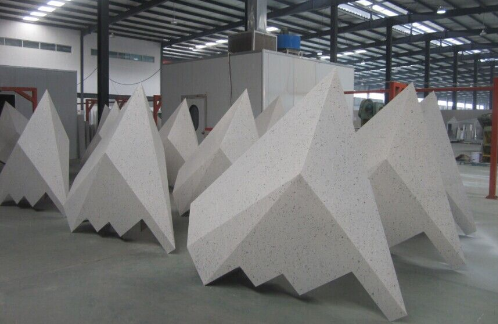

Cold spraying: The coating with room temperature fluidity is evenly coated on the surface of the water-cooled wall by normal temperature spraying. It is cured and shaped at room temperature, and then cured in the oven process to form a dense, high-temperature anti-oxidation, normal temperature anti-corrosion and energy-saving paint. Spray method and material.
Thermal spraying: High-voltage arc is used to melt the metal and coat it on the surface of the water-cooled wall to form a more hard and wear-resistant metal armor. It can be seen that this construction can increase the wall thickness of the sprayed part of the water-cooled wall.
Comparison of advantages and disadvantages:
Cold spraying: The coating has fluidity. It can be applied by brushing, rolling and spraying during construction. It can basically achieve no dead ends and no leakage points. During the oven process, the coating forms a smooth hard layer similar to ceramicization. , wear-resistant, reduce coking. Because the coating is an inert inorganic substance, it is resistant to high temperature or low temperature dew point corrosion such as acid, alkali, oxygen, etc., and effectively protects the furnace tube. At the same time, the cold coating also has a lasting thermal radiation absorption (emission) rate of up to 0.93, which effectively equalizes the furnace temperature, improves the heat exchange efficiency, and reduces the combustible carbon in the flue gas. The hardness and wear resistance of the cold spray coating are completely within the warranty period of the cold coating, and the furnace tube will not be worn under normal abrasive conditions.
Thermal spraying: After spraying, the metal layer is hard and wear-resistant, but because the applied metal layer cures very fast, it basically does not flow on the surface of the object to be coated. The pores formed by fast curing and the hollow under the pores will cause the infiltration of corrosive medium and form crevice corrosion to accelerate the corrosion of the coating. Therefore, caulking glue is often used to seal the metal layer after thermal spraying. However, the temperature resistance of the caulking glue, the thermal expansion coefficient of the caulking glue and the metal layer, the permeability and exhaust of the caulking glue, and the chemical resistance of the caulking glue itself may cause the sealing failure in normal use and lead to the furnace tube. corrosion. .It is important that thermal spraying does not increase heat radiation, heat absorption and other functions, and has no energy saving effect. It is not effective in boilers with low coal combustion quality and obvious abrasion, and it is likely to accelerate the production of furnace tubes. Micropore, crevice corrosion.

Hot information

